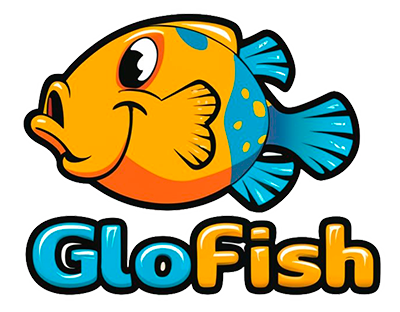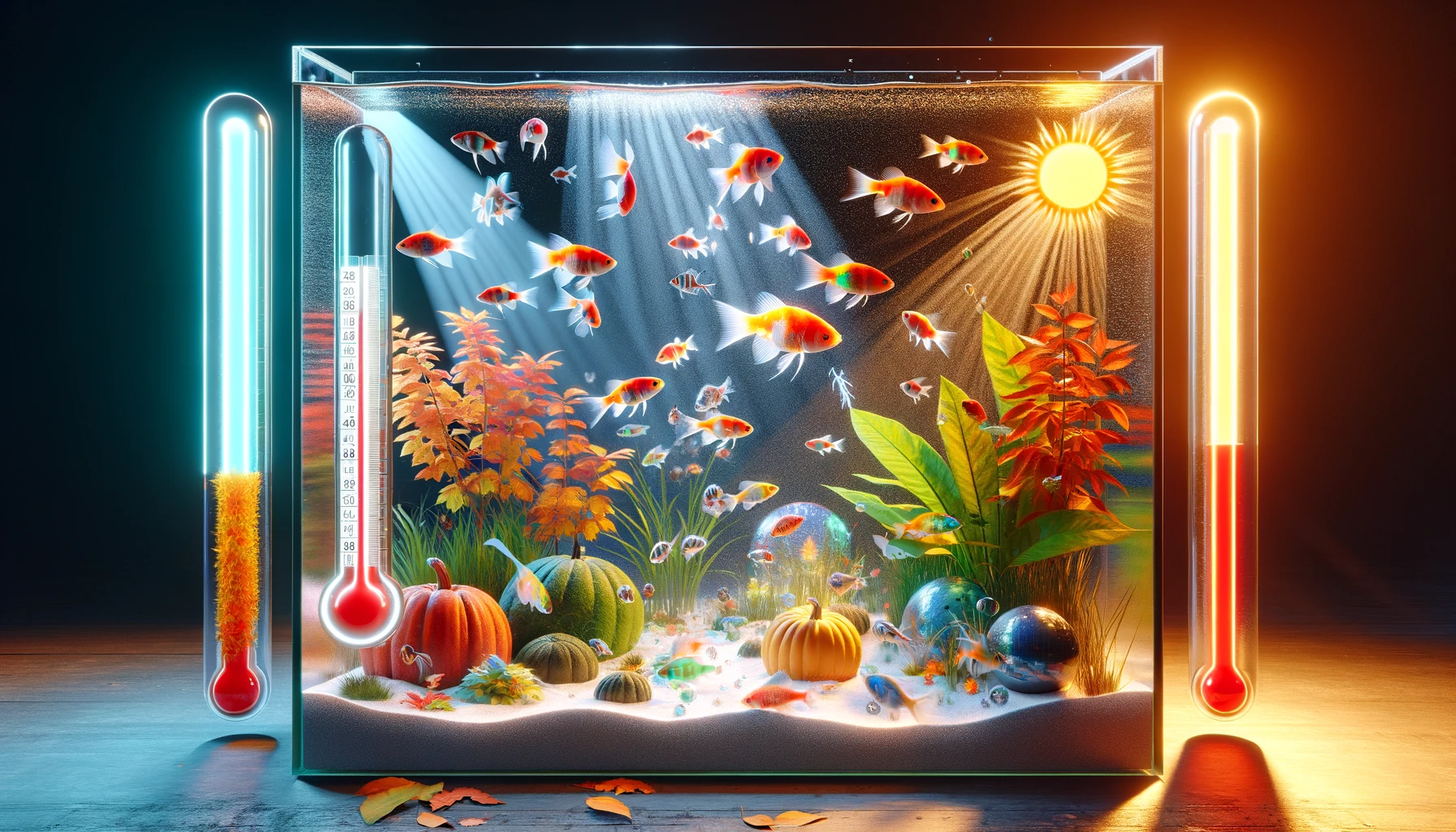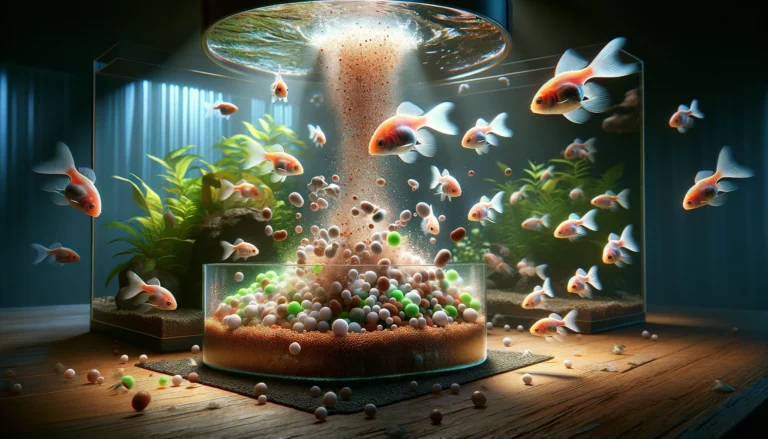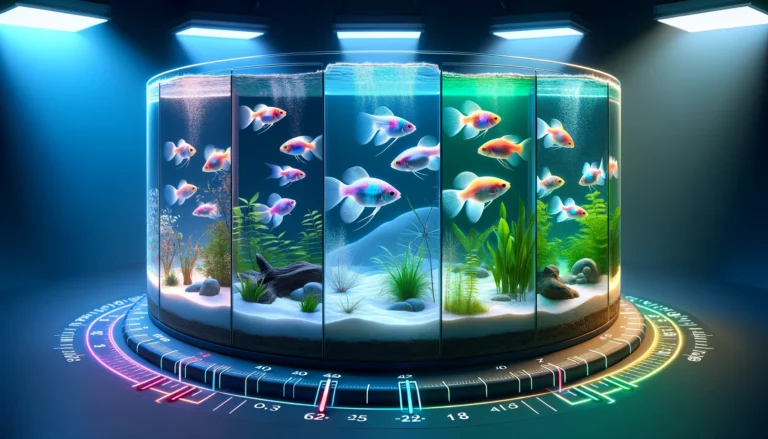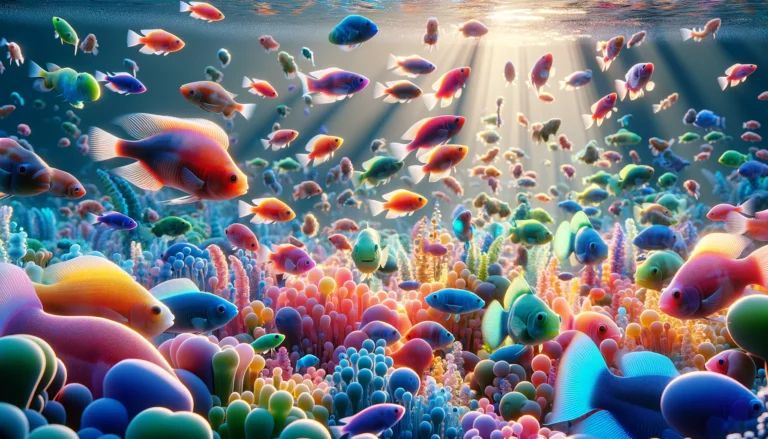Seasonal Conditions and GloFish Breeding Guide
| Water temperature | Season | Lighting daily (hours) | Food |
|---|---|---|---|
| 78–82°F | Autumn and Spring | 12-14 | High protein diet |
GloFish are genetically modified aquarium fish that glow under ultraviolet light, giving them a bright and unique appearance. Their popularity among aquarists is on the rise.
GloFish stand out with vivid colors, a result of integrating jellyfish or coral genes. Their colors range from red to green and blue, achieved with special lighting.
People opt for GloFish due to their distinct look and the brightness they add to aquariums. They are also relatively low-maintenance, making them suitable for novice aquarists.
However, there are debates surrounding GloFish, focusing on ethical and ecological issues. Some countries have banned their sale and breeding. It’s crucial to make responsible choices regarding GloFish.
Features of GloFish breeding
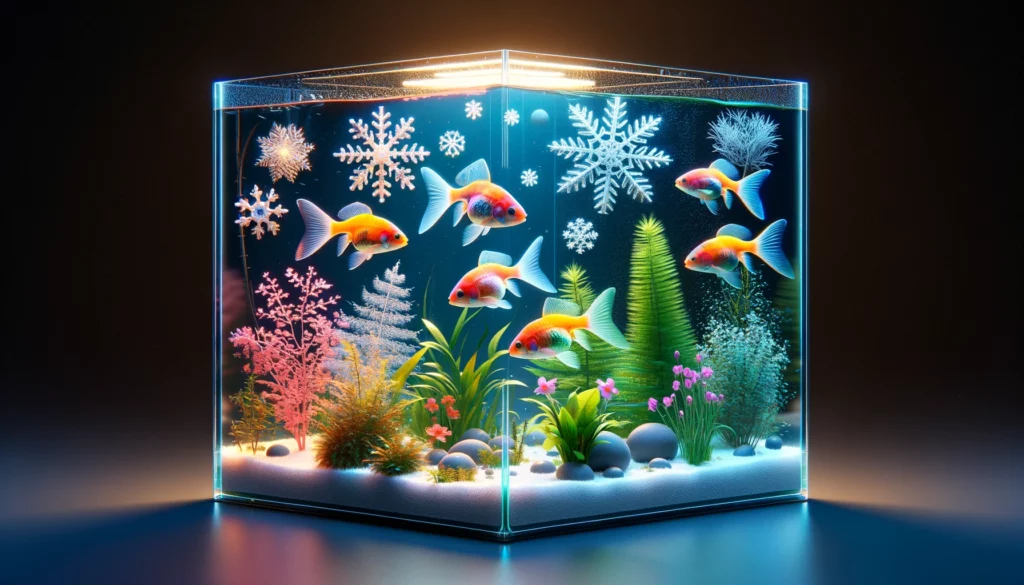
Breeding GloFish mirrors that of their natural counterparts but with unique nuances, requiring specific aquarium conditions including water temperature, lighting, and nutrition, along with ample space.
Breeding can be challenging for beginners, demanding thorough preparation and knowledge of the conditions essential for the fish’s health and well-being.
Genetic modifications in GloFish mean breeding may be subject to strict regulations, with laws in some countries governing their propagation.
The influence of season and air temperature on reproduction
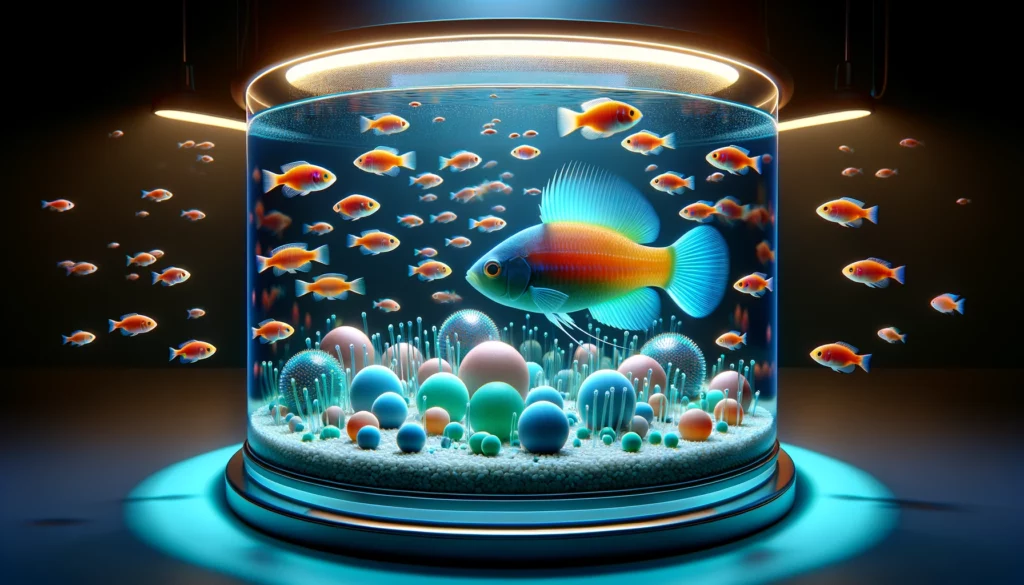
Seasons and air temperature significantly influence GloFish breeding, particularly aquarium water temperature. GloFish prefer warmer water for breeding. During summer, higher water temperatures can promote breeding, but excessive heat can be harmful. The ideal water temperature for GloFish is around 78–82°F.
In winter, maintaining the correct water temperature is crucial, using heaters to prevent drastic temperature fluctuations.
Consistent temperature throughout the year creates favorable conditions for GloFish’s life and breeding.
Breeding Specifics of GloFish
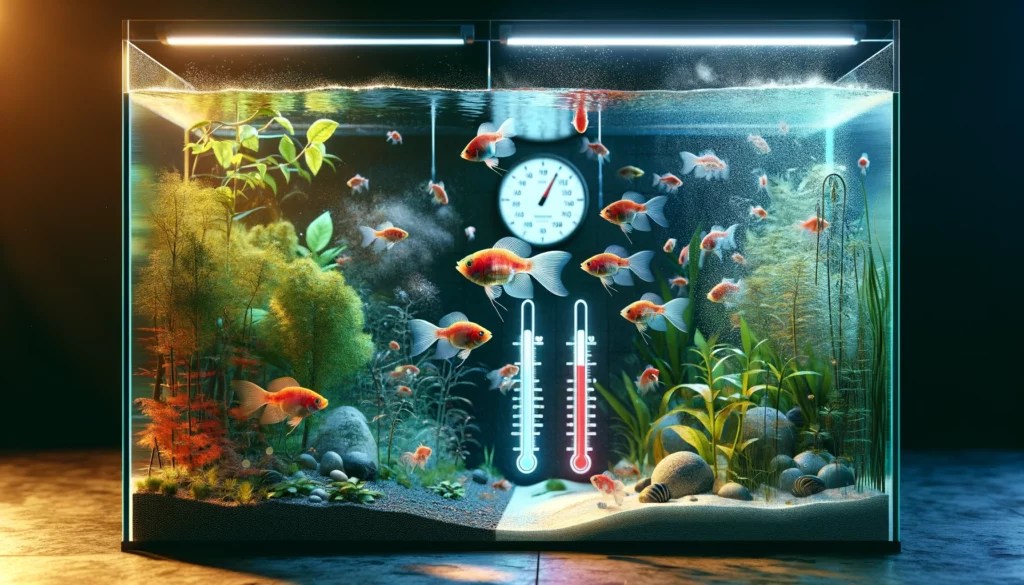
Breeding GloFish mirrors that of their natural counterparts, but with unique nuances. The process occurs in the aquarium.
Successful breeding demands proper conditions. This includes water temperature, lighting, and nutrition. Ample space for the fish is also crucial.
Breeding can be challenging for beginners. Thorough preparation and understanding of the details are essential. Proper conditions ensure the health and well-being of the fish.
It’s important to remember the genetic modification of GloFish. Their breeding may be subject to strict restrictions. Some countries have regulations governing their breeding.
The Influence of Season and Temperature on Breeding
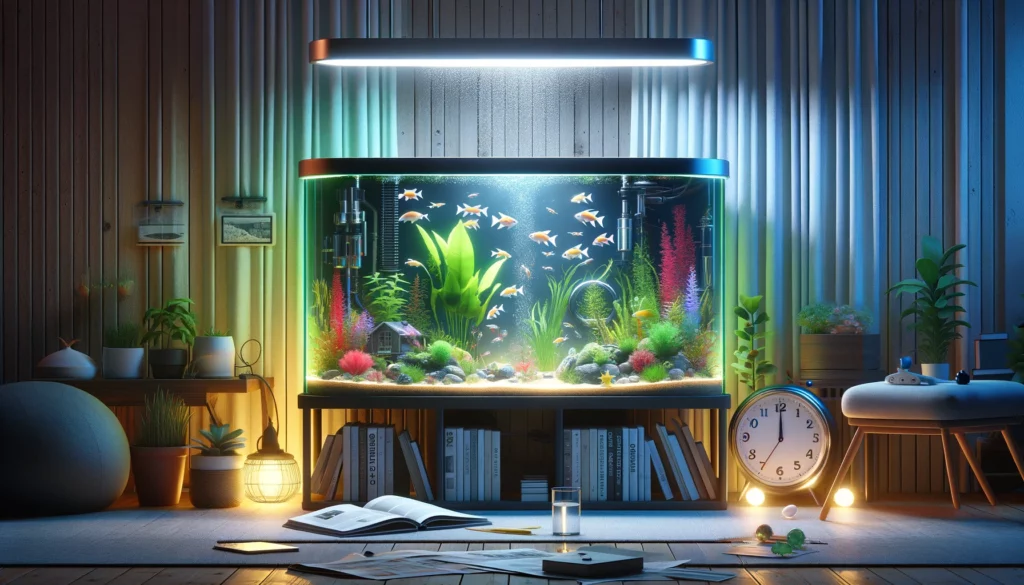
The season and air temperature play a significant role in GloFish breeding, particularly regarding the aquarium water temperature. GloFish prefer warmer water for breeding.
During summer, the water temperature naturally rises, potentially promoting breeding. However, overly high temperatures can be harmful. The ideal water temperature for GloFish is around 78–82 degrees Fahrenheit.
In winter, the aquarium temperature should be carefully controlled. Use heaters to maintain the needed temperature regime and avoid sudden temperature changes.
Maintain a stable temperature throughout the year. This helps create favorable conditions for GloFish’s life and breeding.
Seasonal Features in Caring for GloFish
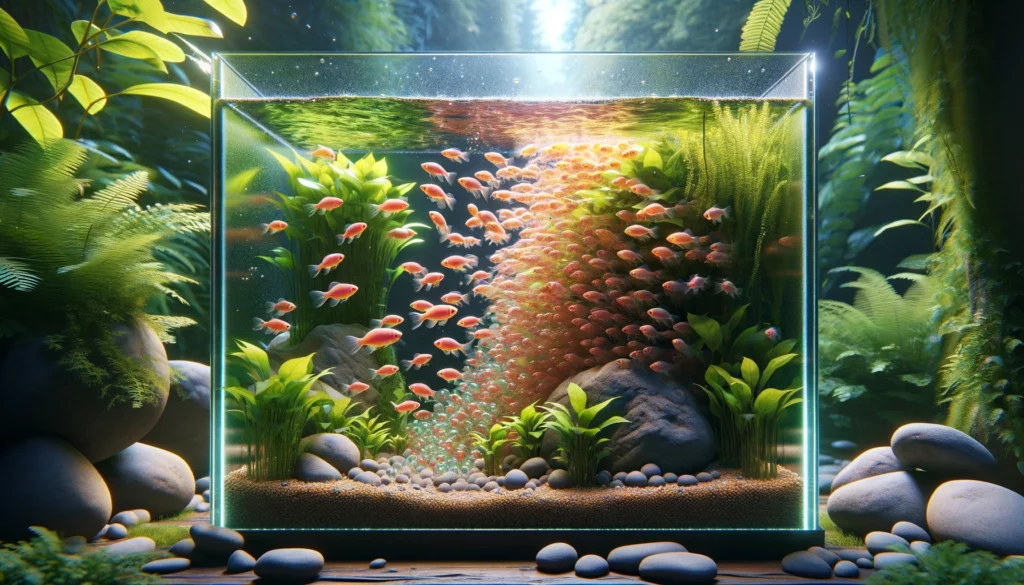
Breeding GloFish mirrors natural counterparts but with nuances due to their uniqueness. Proper conditions like water temperature, lighting, and nutrition are crucial, and ample space is needed.
Season and temperature significantly impact GloFish breeding, with a preference for warmer water. Summer brings naturally higher temperatures, aiding breeding, but too high can be harmful. Ideal water temperature is around 78–82°F. Winter demands careful temperature control to avoid drastic changes.
Light is crucial for GloFish health and breeding, with 12-14 hours of daylight supporting their biological rhythms. Adjust lighting with season changes, increasing during spring and summer, and decreasing in autumn and winter.
Proper nutrition is critical, especially during breeding. Live or frozen feeds are recommended. Year-round care of the aquarium and water, with regular checks on pH levels and temperature, is essential. Seasonal changes, like managing overheating in summer or maintaining warmth in winter, need attention.
Maintaining Ideal Conditions
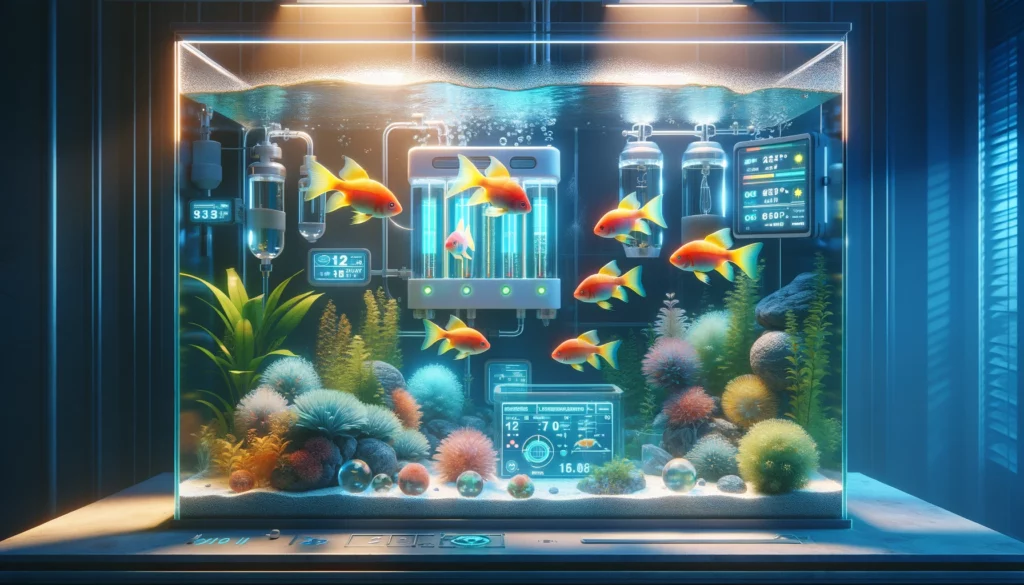
Seasonal care specifics include increased lighting and stable water temperature in spring, temperature monitoring, and water quality management in summer, gradual lighting reduction and balanced nutrition in autumn, and temperature control with a heater in winter.
Maintaining ideal conditions year-round is crucial for the health and successful breeding of GloFish. Every GloFish species may have unique needs, so monitor their behavior and health to ensure a comfortable environment.
If you have any questions about GloFish or want to share your experience, feel free to leave comments. Your insights can be beneficial to other aquarists. Sharing knowledge helps us all take better care of our vibrant underwater friends!
F.A.Q.
- Best Season to Breed GloFish? Autumn and spring, due to favorable temperature and light conditions.
- How Often to Change Water? Change 10-20% of water weekly to maintain cleanliness and balance.
- Suitable Food for GloFish? A varied diet including live, frozen, and special dry foods for tropical fish.
- Need Special Light for GloFish? Ultraviolet or blue lighting is recommended to accentuate their glowing colors.
- Ideal Water Parameters for GloFish? Water temperature between 72°F and 80°F (22°C – 26°C), and pH level from 6.5 to 7.5.
- Does Aquarium Size Affect GloFish Health? Yes, ample space is needed. Minimum recommended is 10 gallons per fish.
- Can GloFish Live with Other Fish Species? Yes, they are peaceful and can coexist with other non-aggressive fish species.
- Should Salt Be Added to GloFish Aquarium? No, GloFish are freshwater fish, and salt can harm them.
- How to Prevent Diseases in GloFish? Maintaining clean water, quality nutrition, and correct water parameters are key.
- How to Know When GloFish Are Ready to Breed? Female GloFish become rounder, and males may start to display courting behavior.
